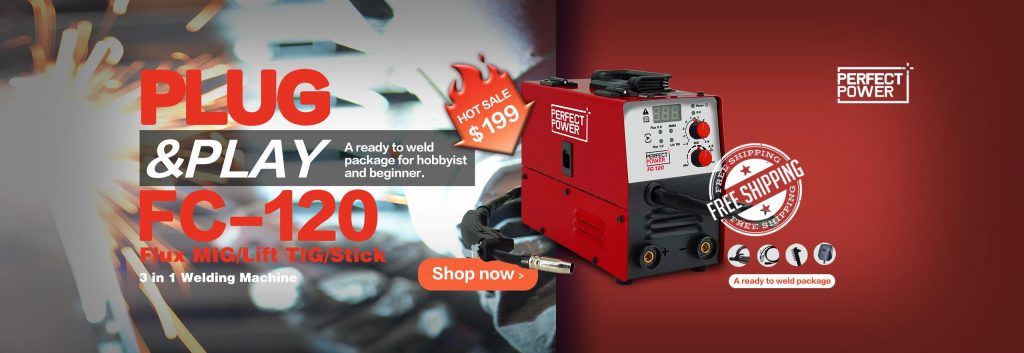
Flux-cored welding machines are quite popular today, as they are commonly part of MIG welders or multi-process machines. In rare cases, you can find dedicated FCAW welders that are usually super-cheap machines, but you lose the ability to run solid MIG wire.
Overall, flux-cored machines utilize direct current that can be either reverse or straight polarity. Self-shielded wires commonly use DCEN, while dual-shielded wires can run off DCEP.
When switching between the MIG welder and FCAW process, you will have to reverse the polarity inside or on the front panel of the welder.

Hobbyist FCAW welders commonly utilize 110V power input, but there are also 230/460V industrial machines. For hobby use, you will be perfectly fine with dual voltage 110/220V. However, if you are looking for a brand-new flux-cored welding machine, feel free to check out the best machines on the market.
As for the power output, most hobbyist flux-cored welders are rated up to 250 amps, and you are perfectly fine with it. However, heavy-duty applications require more power so welders can utilize three-phase high input to output more than 500 amps.
Besides the amperage, you should look for a duty cycle. The duty cycle represents how long the welder can run at a certain amperage before overheating. It is expressed in percentages, and a 60% duty cycle means the welder can run at full power for 6 minutes straight before making a 4-minute break. Keep in mind that some latest inverter flux-cored welders can even
Besides providing a constant power supply, FCAW welders also include several essential pieces for the welding operation. That’s why they come with a welding torch and a wire feed mechanism.



